Apple trees are a great addition to the garden. Their flower is a feast for the eyes in the spring, and their fruits taste delicious in the autumn. Apple trees can serve as a focal point and provide structure to the garden. They also provide various habitats for wildlife, such as flies, birds, and moths.
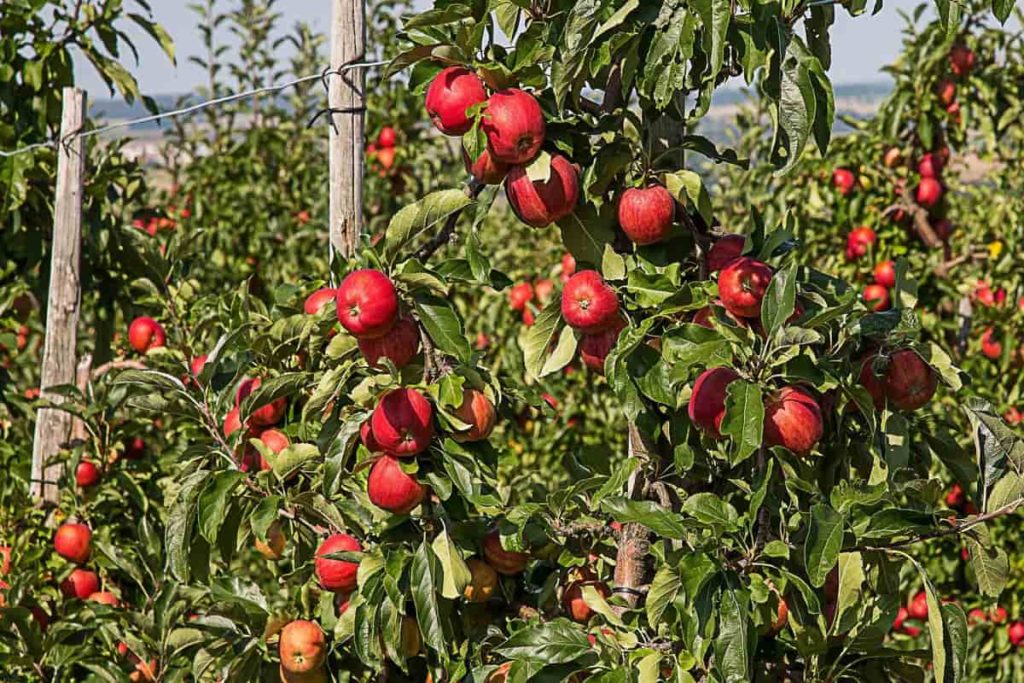
While growing Apple trees, many potential problems have to be tackled. Homegrown Apples can be wormy, bitter, and unappealing. And Apple trees are a susceptible bunch, often prone to pests and diseases. You can grow Apples in three ways: seeding, grafting, or from a young tree.
How to grow Apples for Beginners
How long does it take for Apples to harvest?
- In planning your edible garden, consider the dwarf and semi-dwarf trees, which are available for most fruit varieties that are generally younger than standard. Standard Apple trees can easily last more than 50 years, while the dwarf and semi-dwarf trees can only last 15 to 25 years.
- It will take a long time to grow a seed-to-Apple tree, and it takes 7 to 10 years before you can tell if your tree will bear good fruit or not. Standard Apple trees or full-size trees can start producing fruit 4 to 8 years after being planted. Dwarfs can start producing fruit within two years of planting Apple trees. An Apple tree may take 5 to 10 years to bear fruit when the tree grows from seeds.
Can the seeds in an Apple grow to a tree?
- Everyone knows you can buy Apples at a grocery store or make your choice in a local garden; you won’t know that Apple trees are easy to grow in your backyard. And when you do that, you’ll get a big reward for a little effort at fresh, homegrown apple year after year.
- You can grow an Apple tree from Apple seeds. However, in most cases, Apple trees are not true seeds. For example, a seed from a delicious red Apple will not produce a delicious red Apple tree. Seedling Apple trees are genetically different and generally inferior to the parent tree.
- After at least six weeks, on a damp paper towel in the refrigerator, you can plant Apple seeds the same way you plant any other seed. If it’s after the last spring frost and can be worked on the soil, they can be seeded directly outdoors.
- Make a small hole in the soil with the tip of your fingers or pencil, drop the seed in and cover it with soil, then water it well. Keep the soil slightly moist, and move the pots to the sunny window when the leaves begin to emerge. Plant the strongest seedlings in the ground when they are a few inches long.
Do you need 2 Apple trees to produce fruit?
Apples are pollinated by insects, with bees and flies transferring pollen from the flowers of one Apple tree to another. But you don’t have to plant an entire garden to enjoy the Apples from the tree. To set fruit, most Apple trees require a variety grown nearby for pollination. While some types of Apples are self-pollinated, they produce more fruit from another kind nearby.
In case you missed it: How to Grow Custard Apple/Sugar Apple from Seed to Harvest: Check How this Guide Helps Beginners
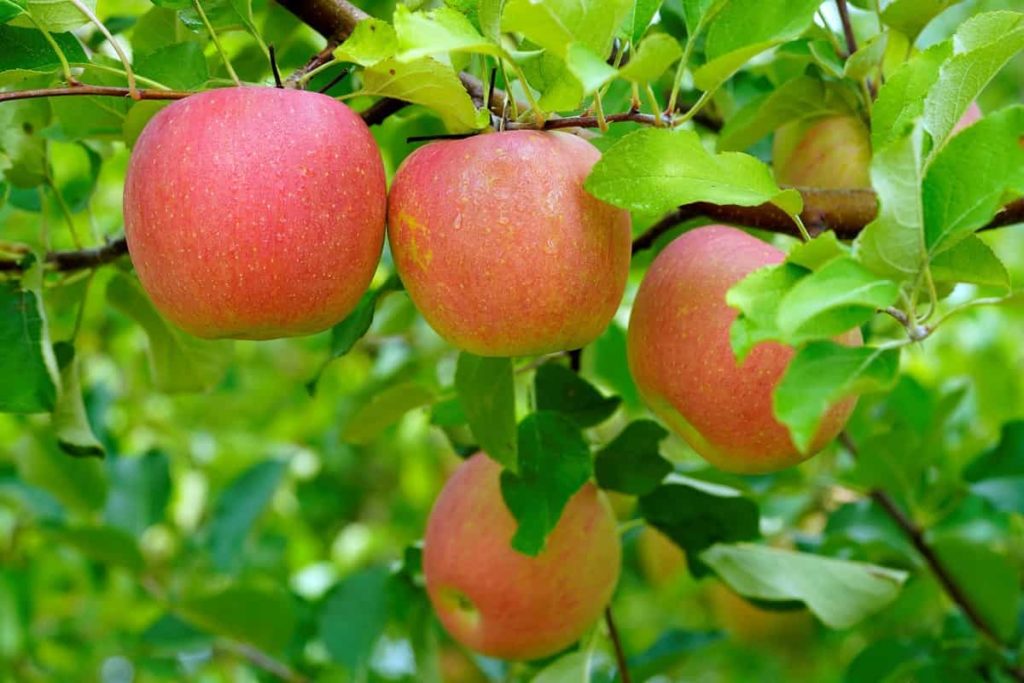
Can you start Apple trees from cuttings?
- If suitable cutting is used and proper care is given to the plant, Apple trees can be grown from branch cuttings. Take fruit tree cuttings from semi-hardwood and softwood parts of a branch. You’ll remove the leaves and apply a rooting hormone to the open wound to help trigger and speed up the rooting process. After, you should place the cutting in a sterile medium, such as vermiculite or a mixture of peat and perlite.
- Usually, the cuttings are taken in January, placed in the fridge, and then grafted onto the rootstock in early spring. However, this does not mean that an Apple tree can’t get rooted with hardwood cutting, but the success rate will be low, and it can take up to six months to root the cutting.
How do you graft Apple branches?
- You can use grafting for two reasons, most fruit trees are not true to seeds, and cuttings do not root easily. The grafting technique adds a piece of vegetative wood (the scion) from a tree we want to propagate to a rootstock.
- Bark grafting is one of the easiest ways to graft an Apple tree. You don’t cut any part in this procedure. Instead, peel off some of the peel from the rootstock and insert the scion between the bark and the inner wood.
Why do Apples not grow true to seed?
- Apples do not reproduce true to type, i.e., a tree grown from a certain variety of seeds will produce Apples that are almost certain to be different from their parents.
- About 1 out of every 80,000 Apple trees grown from seed are standard factors that are good enough even to be considered for evaluation.
- Apples are not grown true to seeds because Apples are hybridized. The fruit of hybridized trees can only be bear true to the parent tree if the tree itself is grafted onto a wild stock.
Do Apple seeds need to dry before planting?
- Before you can plant Apple seeds, remove several seeds from the cover of ripe Apples and let them dry for 3 to 4 weeks. You should mix the seeds with peat moss and a few drops of water after drying.
- Seeds need a dry period followed by a stratification period. You probably won’t succeed in growing your Apple seeds if you skip these two steps. If you want to grow Apple seeds collected from Apples, first let the seeds dry for 3 to 4 weeks.
In case you missed it: Top 20 Steps To Boost Your Apple Fruit Yield: Fruit Size Increase Tips, and Ideas
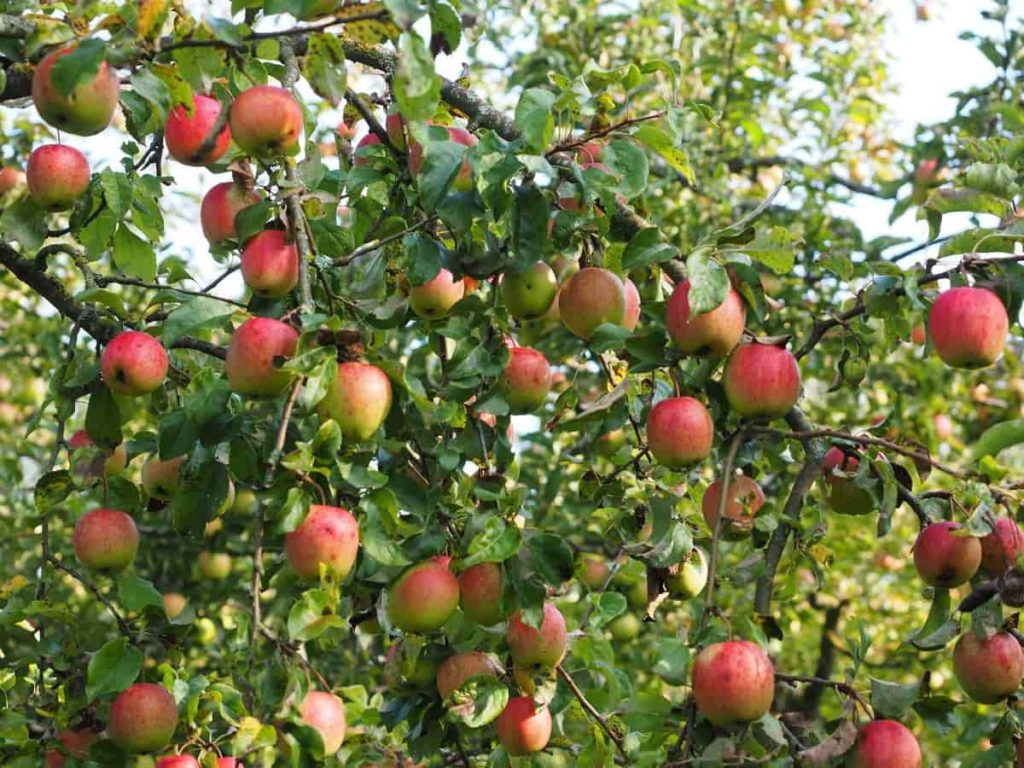
Can I grow an Apple tree from a store bought Apple?
- This is a long-term plan, but you can grow a new tree from a store-bought Apple. All you need is a few supplies and patience. To start, take an Apple of your choice and remove the seeds inside the cover, be careful not to nick or cut them.
- Clean the seeds so they don’t have fruit juice or Apple slices on them, and place each seed in a small pot filled with potting mix. Since Apples come from temperate climates, seeds must be stratified (keeping them cool and moist) for two months before growing.
Do Apple trees need full sun?
- Like most fruits, Apple trees produce the best when grown in full sun, which means six or more hours of direct summer sunlight daily. Apple trees need well-drained soil but should be able to retain some moisture. Light to medium textured soil is best.
- Apples grown in the shade can produce wood consistency. This, combined with a bland taste, makes the fruit less tasty. As a result of severe sun deprivation, trees can fail to produce fruit at all. Avoid these problems by making sure your Apple trees are planted in a full-sun area or where they’ll get full sun for at least 6 hours a day.
Do Apple seedlings need a lot of water?
- Young Apple trees need a lot of water. They need to be watered frequently and deeply. Water newly planted trees up to three times a week, with three large buckets of water.
- However, if you find that your soil or the environment of your location needs water more frequently to avoid drought stress in your Apple trees, adjust your water schedule accordingly.
- Apples require about 20 inches of water during the growing season. The exact volume and frequency of irrigation are essential for the overall health of trees.
- It is better to water the Apple trees once every week deeply. Young Apple trees need 2 inches of water per week. The amount of water to plant depends on the size of the tree, the type of soil, and the weather.
How many Apple seeds does it take to grow a tree?
You need to have at least three dozen seeds of Apples because, on average, only 1 in 4 seeds will germinate and eventually grow into a young tree.
How many Apples do you get from one tree?
- It depends on the size of the tree. In the newer higher density plantings with trees on dwarfing rootstocks growers, harvest 200 to 300 Apples per tree. The number of Apples per tree in older plantings can range from 700 to 800.
- A very good yield for an Apple tree grown in the backyard is about 80 to 150 fruits per season.
Can you grow Apple trees in pots?
- You can grow Apple trees in small containers, but if you’re in doubt, bigger is better than small. Whatever the size, make sure it has drainage holes.
- Surprisingly, Apples will grow in modest containers, giving you attention to watering and feeding. However, a large pot does not dry quickly and will be more stable when the tree is in the leaf and loaded with fruits. So, choose a large, heavy pot, ceramic or plastic, if you prefer.
- If the Apple tree doesn’t produce fruit after three years or more, you may have to move the pot out. You’ll need to search for the self-pollinating type.
- You can use potting soil, compost, and regular garden soil to plant your container-grown Apple trees. Place gravel or broken pottery pieces under the container to facilitate drainage before planting trees.
In case you missed it: Custard Apple Gardening, Tips, Ideas, and Techniques
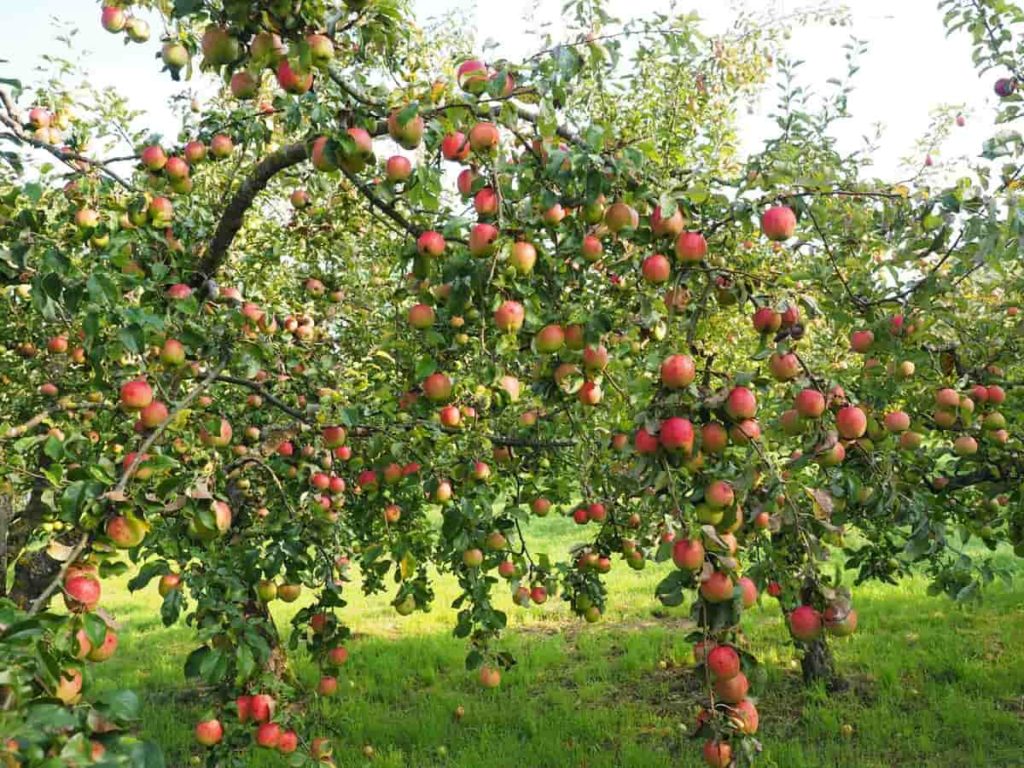
What climate do Apples grow in?
- Most varieties of Apples are high-chill and are not happy with less than 800 chill hours. Mid-chill varieties will mostly grow in warmer zones but prefer at least 450 chill hours.
- During active growth, the average summer temperature should be around 21°C to 24°C.
- While Apple trees can grow in almost any hardy area, Apples grow best in climates where it’s cold in winter, moderate in summer and moderate to high humidity. They can withstand winter temperatures up to 5°C.
How often should you prune Apple trees?
- Apple trees are trained as free-standing shrubs best pruned to ensure a good round of fruit-bearing wood every winter. Not pruned trees tend to be less productive and dense with older branches. It aims to create an open goblet shape with a framework of four to five main branches.
- Pruning is done in late winter while the tree is dormant or before new growth begins in early spring. Avoid pruning in summer and autumn, if possible, as it stimulates new sensitive growth that can be vulnerable to pest attack and winter damage.
- A rule of thumb is to limit pruning to 20% or less each year. This means a neglected old Apple tree can be transformed into a healthy and productive fruit tree in four years.
What soil do Apple trees like?
- Apple trees can grow in a wide range of soils, from medium-textured soils to gravel sand. However, soils produce poor results, and the best crops are found on fertile sandy lands and loams.
- Apple trees are reasonably tolerant of soil conditions but prefer well-drained soil, not sandy conditions.
- First, you will need to find a well-drained place; sandy loam soil is excellent. It is also very important to keep your trees in full sunlight, enabling them to grow vigorously and eventually produce the best fruits.
- First, you’ll need to dig a hole three times the size of the pot and as deep as the root ball. The dirt you remove from the hole should be mixed 50/50 well with aged mushroom compost, rotten pine bark, aged manure, or compost.
What do you fertilize Apple trees with?
- Spring is the best time to fertilize fruit trees because, at the same time, they need a lot of energy to push out new leaves and nurture baby fruits.
- Like all fruit trees, Apple trees thrive in high nitrogen environments. If you have mature trees growing in the soil that doesn’t need to be corrected, a 20-10-10 fertilizer is an excellent supplement. This helps maintain an excellent nutrient balance of about 2:1:1 to support healthy growth.
- Apple trees require nitrogen, phosphorus, and potassium, three numbers on fertilizer bags, and various trace minerals.
- Unlike, other fruits, Apple trees do not need to be fertilized several times yearly. If your tree is more than two years old, you only need to fertilize it once in the spring to start growing.
- Nitrogen is an essential element that Apple trees need. It helps trees grow and ensures strong leaves. One of the oldest fertilizers in the world, manure is still used to provide nitrogen to Apple trees.
In case you missed it: Apple Gardening For Beginners, How To Start, FAQs
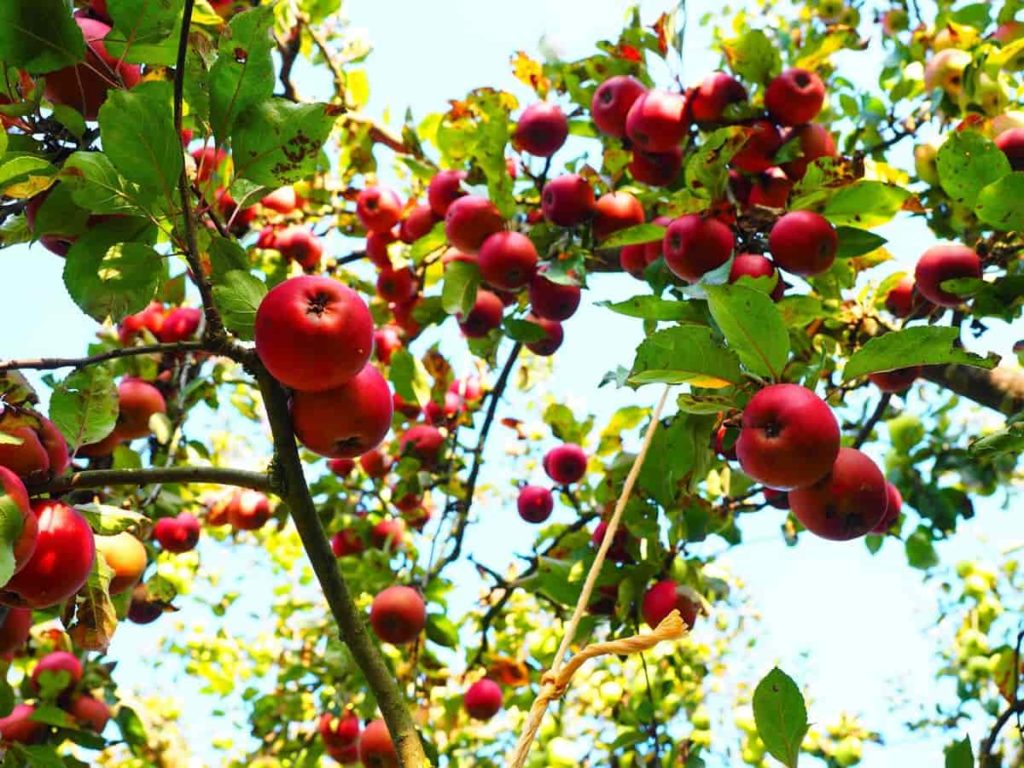
How deep should you plant Apple seeds?
- Plant the seeds 1/2 inch deep. The cool, moist requirement can also be achieved indoors. Place a layer of damp sand under a small container, such as a plastic margarine tub, place the Apple seeds on the moist sand, and then cover the seeds with extra moist sand.
- When it’s time to plant, look for a place that receives direct sunlight and spreads compost on the soil. Then, make a trench an inch deep in the soil. You’ll need to grow the trench 12 inches for each seed you plant.
- The development of the root system was extremely rapid, the roots reached a maximum depth of 8.8 and a lateral spread of 12 feet in the first year and 14.8 feet to 21.2 feet in the second year. The maximum lateral spread reached 29.4 feet during the third year, and the maximum depth reached 17 feet.
Why are my Apples falling off the tree?
- Some fruit-bearing trees will naturally thin themselves by dropping excess fruit prematurely. Often, a period of stress (a long, hot summer with very little rain) will cause a tree to abort its fruit to conserve energy. Apple trees need deep water during the drought.
- Apples start falling from the tree before they are ripe or fully grown. Often the flesh becomes softer and less delicious than normal. Many factors can trigger early fruit drops: higher fruit loads, greater pruning in summer, loss of pests, diseases, and extremes in the weather.
- A large crop of a small variety of Apples, especially those set up in clusters, will push each other closer to harvest. Well, early season thinning, especially reducing clustered fruits, will help prevent this type of dropout.
How do you grow bigger Apples?
- While the amount of fruit that falls on its own can be problematic, you often need to do some extra thinning to get the bigger fruit you want. It is ideal for removing the largest fruit from each cluster and placing the Apples at a distance of 8 to 10 inches on the branch.
- If the Apple trees are not growing well and the Apples are small, it often indicates a growing problem. Roots are the main source of absorption of nutrients and water for the tree. Poor growing conditions will prevent the growth of the tree as a whole.
How do I know when to harvest my Apples?
- Apples are ready when the skin color is darker. Fruits on the sides and top of the tree usually ripen first because they get more sunlight. Ripe fruits should easily come away from the tree, while the presence of a windfall is a sure sign that you can start harvesting.
- If the initial green color of the Apple is gradually turning yellow, then many varieties are ready to pick. Largely red-skinned Apples should be good and light when harvested, not black or yellow.
- It is easier to separate from the tree when the Apple is ready. Hold an Apple in your hand to test its readiness, lift it to the stem, and twist. If it comes off easily, it’s ready. If it requires a little yanking and tugging, it’s not.
How do I encourage my Apple tree to produce fruit?
- An Apple tree without fruit would not be getting enough sun or water. Poor fruit production may also be due to over-fertilization. Provide a 2-to-3-inch layer of mulch around the tree, but not touching the stem, to maintain protection and moisture.
- You’ll need to prune your Apple tree, first to train a central leader the first year and then for care each year to stimulate fruit production and keep the tree open and balanced. Without regular pruning, the Apple tree produces a lot of vegetative growth that turns into fruit-bearing wood.
What happens if you pick Apples too early?
Most Apple varieties have brown seeds when they mature but can also turn brown weeks before harvesting. Picking Apples prematurely leads to sour, starchy, and generally undesirable fruits, while Apple harvesting is too late, resulting in soft and mushy fruits. After picking Apples, they do not become ripe at home or improve the quality.
In case you missed it: Growing Custard Apple in Containers (Sitaphal)
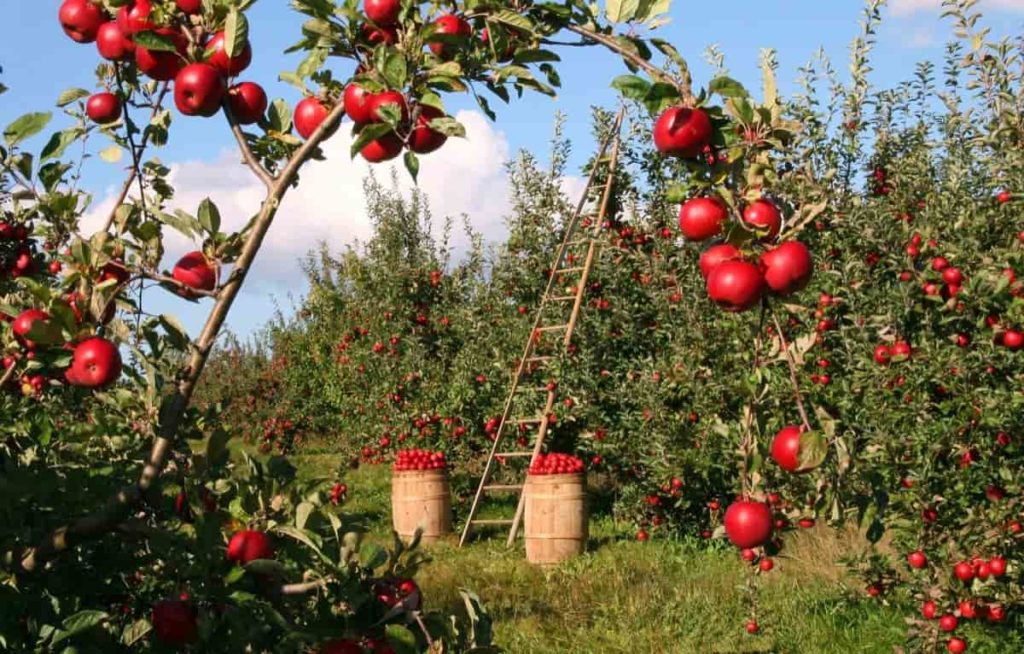
Conclusion
Grow Apples in moist but well-drained soil throughout the sun. Prune in summer or winter, depending on the shape of your tree, and harvest the Apples when ripe. And although everyone knows you can buy Apples at a grocery store or make your choice in a local garden, you won’t know that Apple trees are easy to grow in your backyard. And when you do that, you’ll get a big reward for a little effort at fresh, homegrown apple year after year.
- Organic Gardening on a Budget: Low-Cost Methods and Materials
- Gongura Seed Germination and Planting Methods
- Cabbage Seed Germination and Selection
- Broccoli Seed Germination and Selection
- Asparagus Seed Germination and Variety Selection
- Seasonal Flower Gardening: Best Practices for Spring, Summer, Fall, and Winter
- How to Grow Hibiscus from Flower
- Plantation Ideas for Home Decoration: A Beginners Guide
- Flower Garden Designs and Layouts for Beginners
- Planting and Spacing Techniques in Papaya: A Beginner’s Guide
- Growing Gold: Essential Techniques for Planting Pineapples
- How to Make Kalanchoe Plant Bushy: Home Remedies and Solutions
- 11 Reasons Why Your Gardenia is Not Blooming: Home Remedies and Solutions
- Eco Elegance: The Guide to Designing a Drought-Tolerant Landscape
- Gardening on a Slope: Strategies for Hillside Landscaping
- Nourish and Flourish: Top Organic Mulches for Thriving House Plants
- Everything You Want to Know about Indian Mogra Flower: Discover Uses and Growing
- Green Thumb Success: Expert Tips for Cultivating Greenhouse Pumpkins All Year Round
- Maximize Growth & Flavor: The Ultimate Guide to Companion Planting in Herb Gardens
- How to Control Rhododendron Problems Naturally: Home Remedies and Organic Ways to Fix Them
- Natural Magic: The Remarkable Benefits of Cinnamon for Plants
- Best Steps to Revive Dying Tulip with Natural and Organic Treatment
- 10 Reasons Why Your Angel Trumpet is Not Blooming: Remedies and Treatment
- How to Fix Periwinkle Leaf and Flower-Related Problems: Natural Remedies and Solutions
- How to Fix Zinnias Leaf and Flower Problems: Discover Natural and Home Remedies
- Organic Steps to Induce Lemon Tree Flowers: A Comprehensive Guide
- Bloom Booster: Crafting the Perfect Homemade Bougainvillea Fertilizer
- Optimizing Growth: A Guide to Applying NPK Fertilizer for Potted Plants
- 10 Best Homemade Fertilizers for Rubber Plant: DIY Recipes and Application Method
- How to Boost Female Pumpkin Flowers: Effective Steps for More Flowers and High Yields
- Transform Your Indoor Garden: Top Benefits of Pink Salt for Houseplants
- 10 Best Homemade Fertilizers for Peacock Plants (Calathea): Easy DIY Guide
- Unlock Blooms: 9 Reasons Why Your Potted Chrysanthemum is Not Blooming
- 8 Reasons Why Your Potted Hibiscus is Not Blooming: Fix it with Simple Solutions
- Unlock Blooms: 9 Key Reasons Your Potted Frangipani Won’t Flower
- 10 Reasons Why Is My Ice Plant Not Blooming: Remedies and Treatment
Good Services to the Farming Community and Food processing Industries